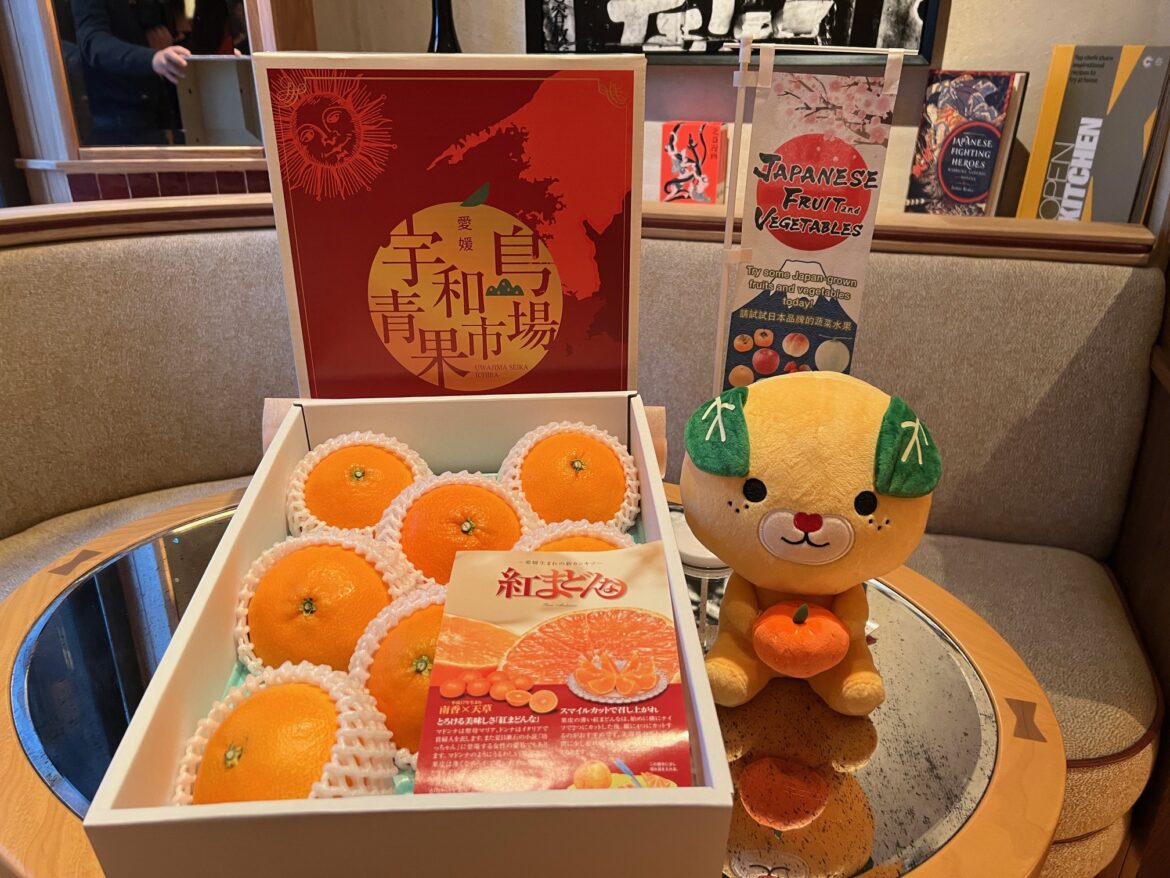Stretching across the northern coast of Shikoku Island, Ehime Prefecture boasts a collection of scenic islands dotting the Seto Inland Sea, many of which are part of the breathtaking Setonaikai National Park. Some may recognise this area which has become famous in recent years for the Shimanami Kaido Cycling Path that crosses the Seto Inland Sea, connecting Shikoku to Hiroshima Prefecture on the main island of Honshu.
Japan’s Citrus Haven & the Ehime Jelly Orange
Thanks to its mild climate, sunny weather throughout the year, and soil rich with minerals, Ehime Prefecture has become a leading citrus production location in Japan. Not only does the prefecture grow the most kinds of citrus fruit in Japan (producing over 40 types), but in terms of total citrus fruits harvested too. While mandarin oranges from Ehime, are well-known for being tasty, the star of the show is the Beni Madonna species, often called the Ehime Jelly Orange outside of Japan, for its sweetness and jelly-like texture.
The Origins of Beni Madonna
The Beni Madonna story starts in the late 20th century in Ehime Prefecture, when there was a strong demand for high-quality citrus. This led farming experts to create a new type of fruit that would stand out, and they achieved this by crossing the juicy and sweet Nanko mikan, with the Amakusa orange, known for its pleasant smell and soft flesh. This combination created the Beni Madonna, which has the best traits of both parents, and quickly became popular in Japan. Initially, registered as Ehime Kaken No. 28 in 2005, it was later trademarked as Beni Madonna by JA Zen-Noh in 2007, and now is exclusively produced by approximately 1200 farmers in Ehime prefecture.
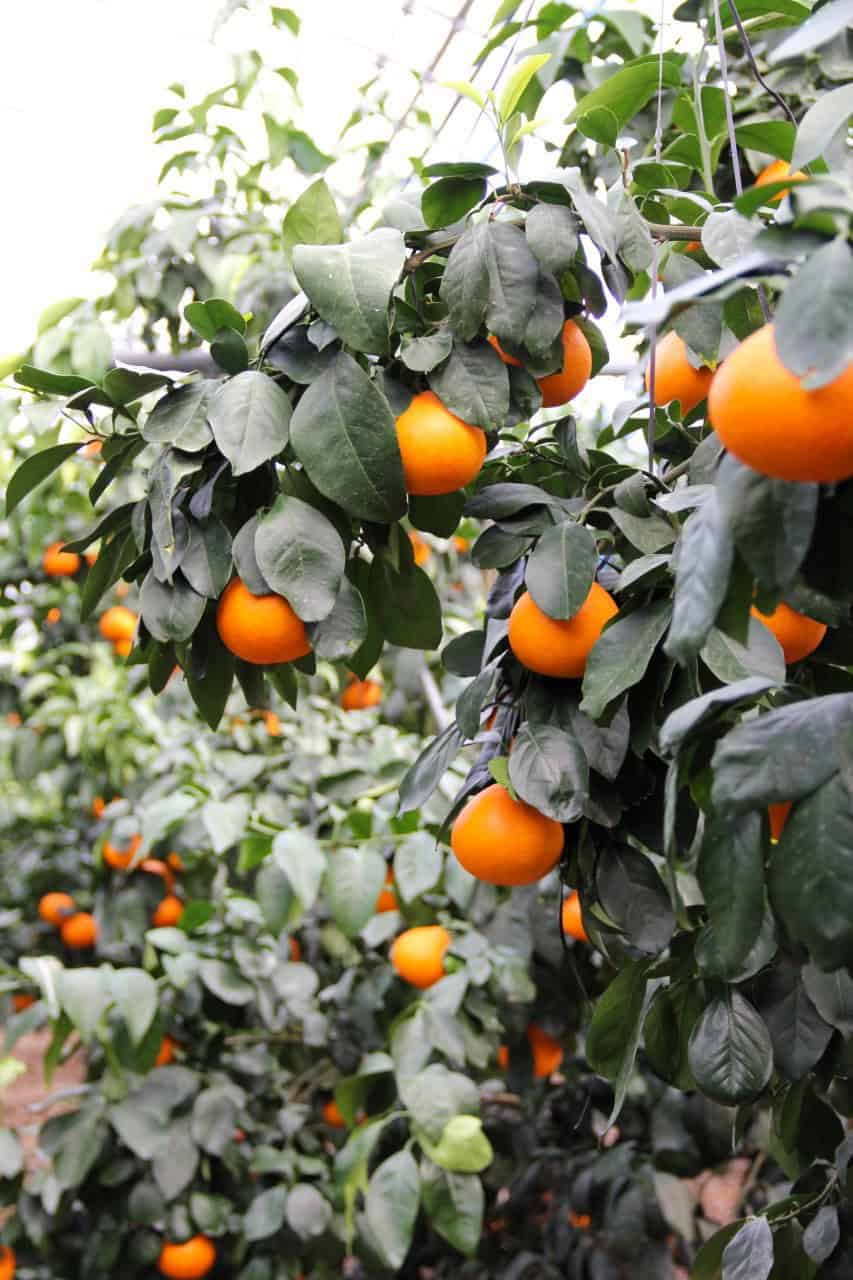
What Makes Ehime Jelly Orange Unique?
The Beni Madonna, or Ehime Jelly Orange, is a premium Japanese citrus fruit due to its special features that differ from a regular mandarin orange. Let’s start with the appearance. In Japanese, Beni refers to a deep orange-red colour, and this is beautifully revealed when you slice an Ehime Jelly Orange in two. Incidentally, if you’re wondering where the Madonna part of the name comes from, please check our FAQ section below.
Next, going onto the skin of the Beni Madonna, it has a thin and delicate peel that adheres to the flesh. While you can peel the Ehime Jelly Orange skin by hand, we would recommend using a knife to cut it to avoid tearing the inner skin and spilling any tasty juice. Noticeably, inside the fruit, the membranes of the different segments are hardly visible.
Finally, we get to the flavour. Ehime Jelly Oranges are prized for their sweetness, delicate hint of acidity, and exceptional juiciness. Each bite of the fruit is like eating a delicious orange jelly treat that melts in your mouth, and it’s no wonder that people from all over the world love eating this citrus delicacy!
Cultivation and Harvesting Ehime Jelly Oranges
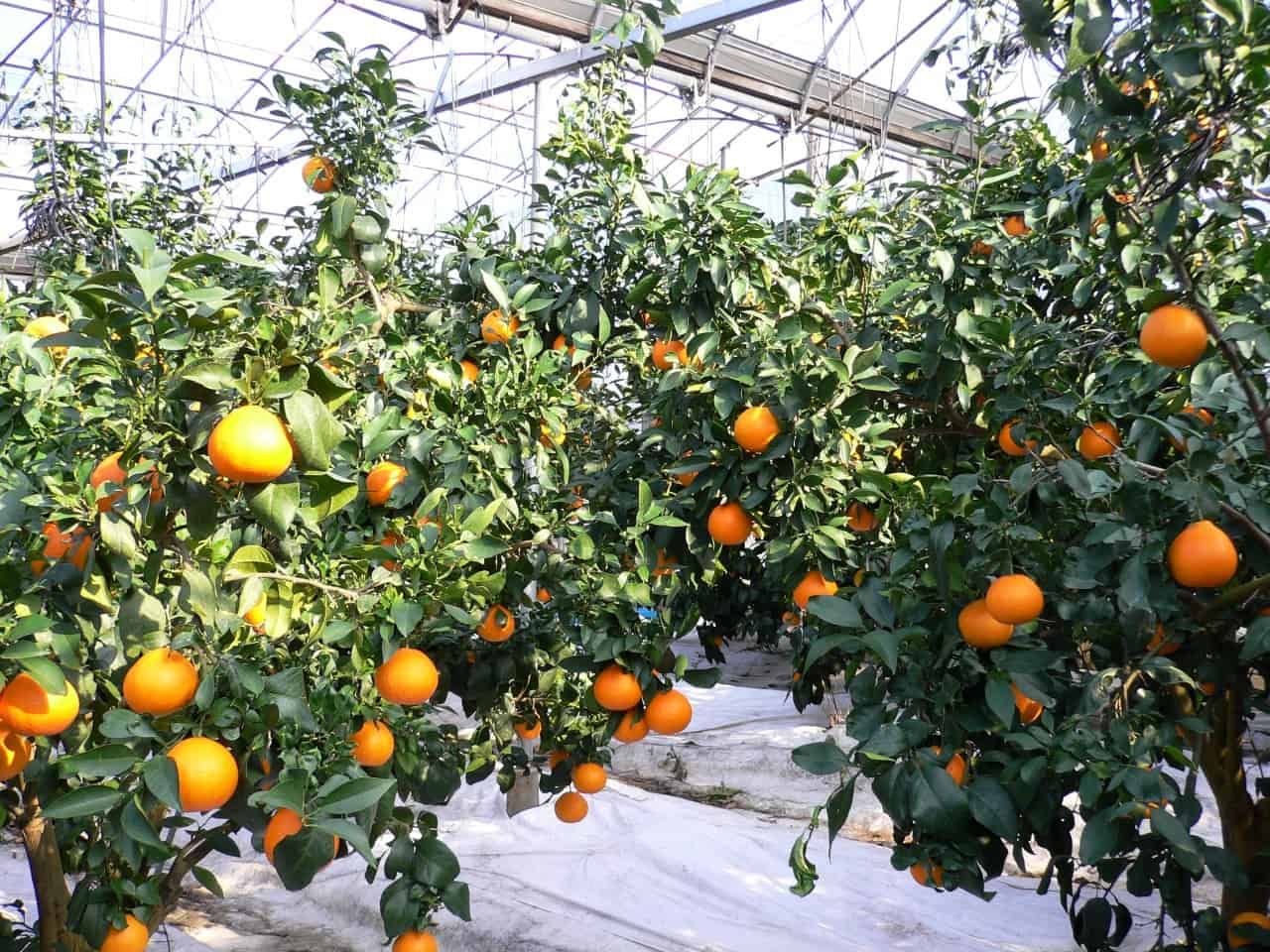
Creating a fruit like the Ehime Jelly Orange needs careful attention and it took over 17 years for the farmers to first produce the Beni Madonna. Ehime Prefecture with its abundant sunshine has the right conditions for growth and the farmers have honed their craft when it comes to cultivating and harvesting the fruit.
The Ideal Conditions for Growing Beni Madonna
The main place to grow Beni Madonna in Ehime Prefecture are in Imabari City, Uwajima City, and Matsuyama City. There they are often grown in greenhouses which create the best conditions for the fruits and protect them. The Ehime Jelly Orange really thrives in the well-kept greenhouses, especially with the skills of the Ehime farmers. Here are three of the special ways the fruits are made by the farmers:
- Taking control over moisture in the fruit and not overwatering the Ehime Jelly Orange to make it sweeter
- Putting a cover on the soft skin for those fruits not grown in greenhouses so they are not hit by rainwater
- Covering the fruit so it is protected from too much direct sunlight
Harvesting Practices in Japan
The best season for harvesting to capture the fruit’s flavour and quality falls between late November to late December. During this time, the meticulously grown fruits, having reached peak sweetness, are carefully picked and sorted to prevent damage to their soft skin. Beni Madonna also undergo a selection process, where only those passing a high level of sweetness, low acidity level, and correct colour are deemed ready for the market and sold to consumers.
Ehime Jelly Orange Exclusive Sampling Event at Kioku Bar
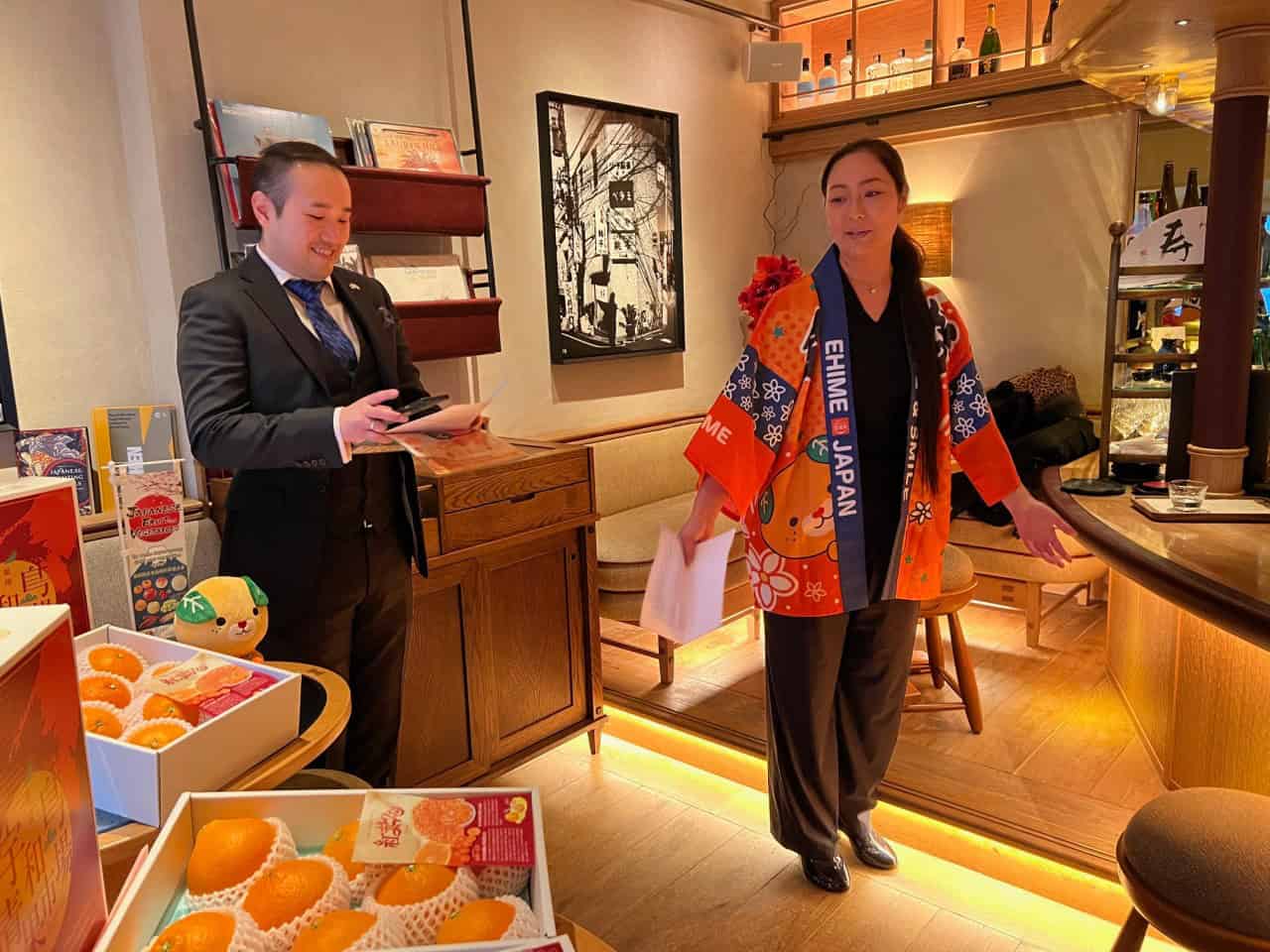
In December 2024, Avanti Fruit, together with the Ehime Prefectual Government organised an Exclusive Sampling Event for tasting Beni Madonna. The event was held at Kioku by Endo, a fine dining and intimate bar located in the OWO in Whitehall. This invite-only sampling was attended by the head chefs and bartenders of the most prestigious hotels and restaurants in London, along with local press and social media influencers.
Following on from an initial introduction by Gary from Avanti Fruits, and Ehime Prefectural government, the attendees tried the Beni Madonna by itself, and then enjoyed it paired with various Japanese canapes including sashimi, beef tartlets, a tuna with miso brioche, and tapioca with tofu, miso and black garlic.
What were our thoughts on the Ehime Jelly Orange?
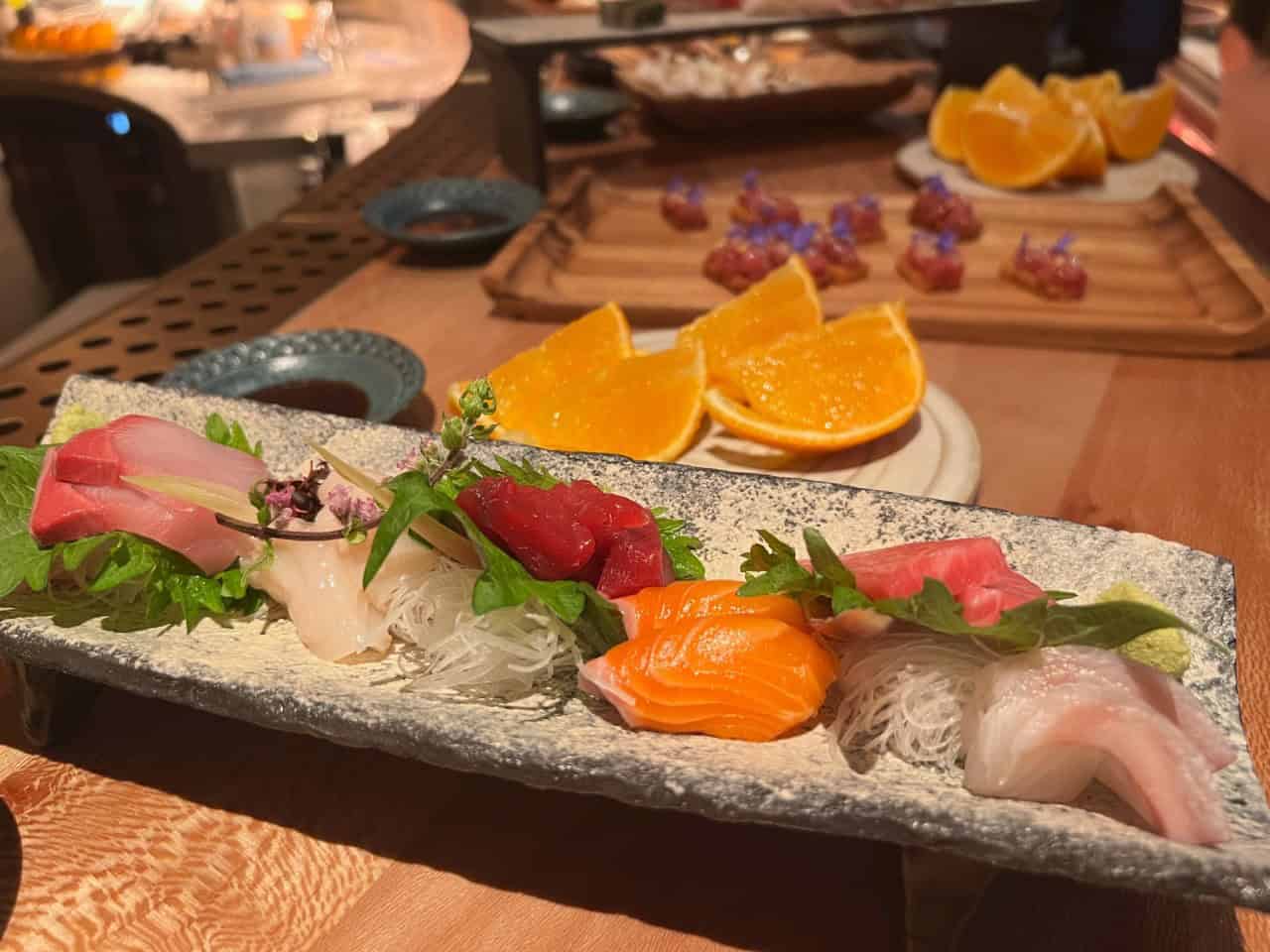
For almost everyone at the event, it was our first time to eat Beni Madonna. The anticipation was high, and the fruit certainly lived up to the hype. The cut wedges immediately caught our attention with their vibrant deep orange-red hue, and as described the taste of the oranges was exquisite. Each bite offered not only a burst of juicy sweetness but also a chance to appreciate the unique jelly-like texture as the wedges melted effortlessly in your mouth.
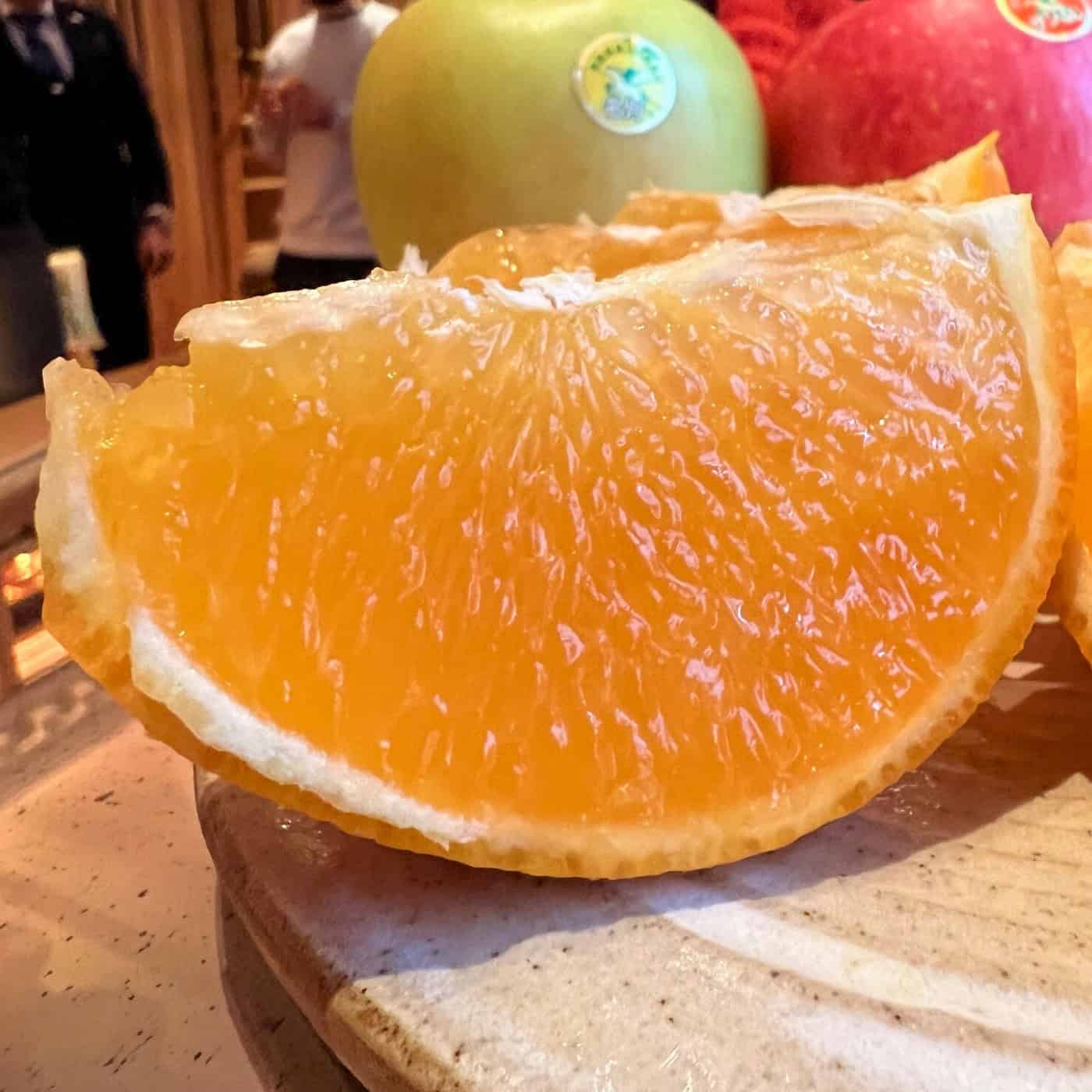
Although there was a strong consensus on how fantastic the fruits were, after checking in with several event attendees, we found it was down to preference on how to eat the oranges. Personally, this writer felt it more satisfying to eat each segment as a whole, however others preferred to take a few bites of the segment to really relish the taste and texture. We’d welcome readers to take the next opportunity to try both ways of eating Beni Madonna and see which is most to their liking!
Cocktail time at Kioku bar!
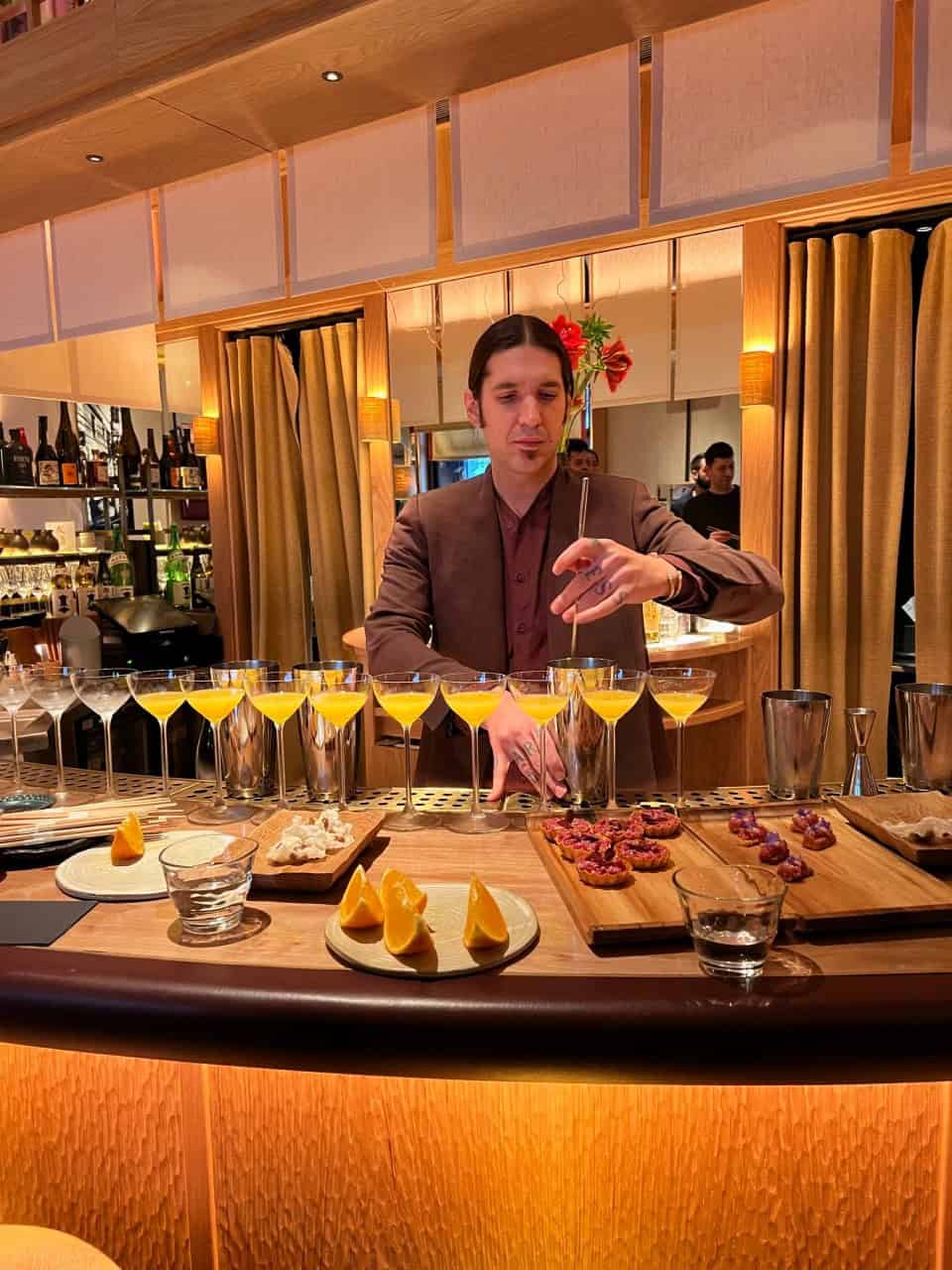
Next, we tried an original Ehime Jelly Orange cocktail crafted by the Head Kioku bartender. Inspired by the classic Bronx cocktail—a martini enhanced with orange juice—this version offered a more refined twist, incorporating every part of the Beni Madonna orange, including its skin. With numerous bartenders watching this drink being made, the pressure was high, but this exquisite cocktail undoubtedly lived up to expectations!
After a kanpai cheers, it was time to drink the cocktail, and we found it to be both extremely easy to drink, smooth and full of rich tasting fruit, and an excellent finish. We would certainly recommend it, and here are the ingredients for this special Ehime Jelly Orange Cocktail:
- Dry Vermouth – 5 ml
- Sweet Vermouth – 10 ml
- Nabeshima Daiginjo Sake – 10 ml
- Syrup – 2 ml
- Beni Madonna – 20 ml (all blended together using a centrifuge and seeded twice)
A special thank you to Shiraishi-san from KS Leman for sharing the recipe after the tasting. Currently based in Switzerland as a consultant and expert on Ehime Prefecture, Shiraishi-san also provided us with some insights about the region. Beyond its incredible fruits, Ehime boasts some excellent seafood including Bream, Amberjack and Bonito. On top of this, the area is well known for its pearl cultivation and high quality cotton towels.
Where can you buy Ehime Jelly Oranges in the UK?
Although the season to purchase this premium citrus fruit is limited to December, you can buy the Ehime Jelly Orange in the following stores (subject to availability):
We hope that you found this article helpful to understand more about Ehime’s citrus fruits, especially the Ehime Jelly Orange. To learn more about sourcing Japanese premium fruits, be sure to visit the Avanti 4sia website. Also, please feel free to use our contact us page if you’d like more information on Beni Madona or to get in touch with Shiraishi-san from KS Leman.
For disclosure, this is sponsored content, however we tried the Ehime Jelly Oranges ourselves in person and provided our honest opinions on the sampling experience. If you’re looking for more information on Japanese fruits and food, please check our articles on Fukushima Peaches and why Japanese rice is so delicious.
Frequently Asked Questions
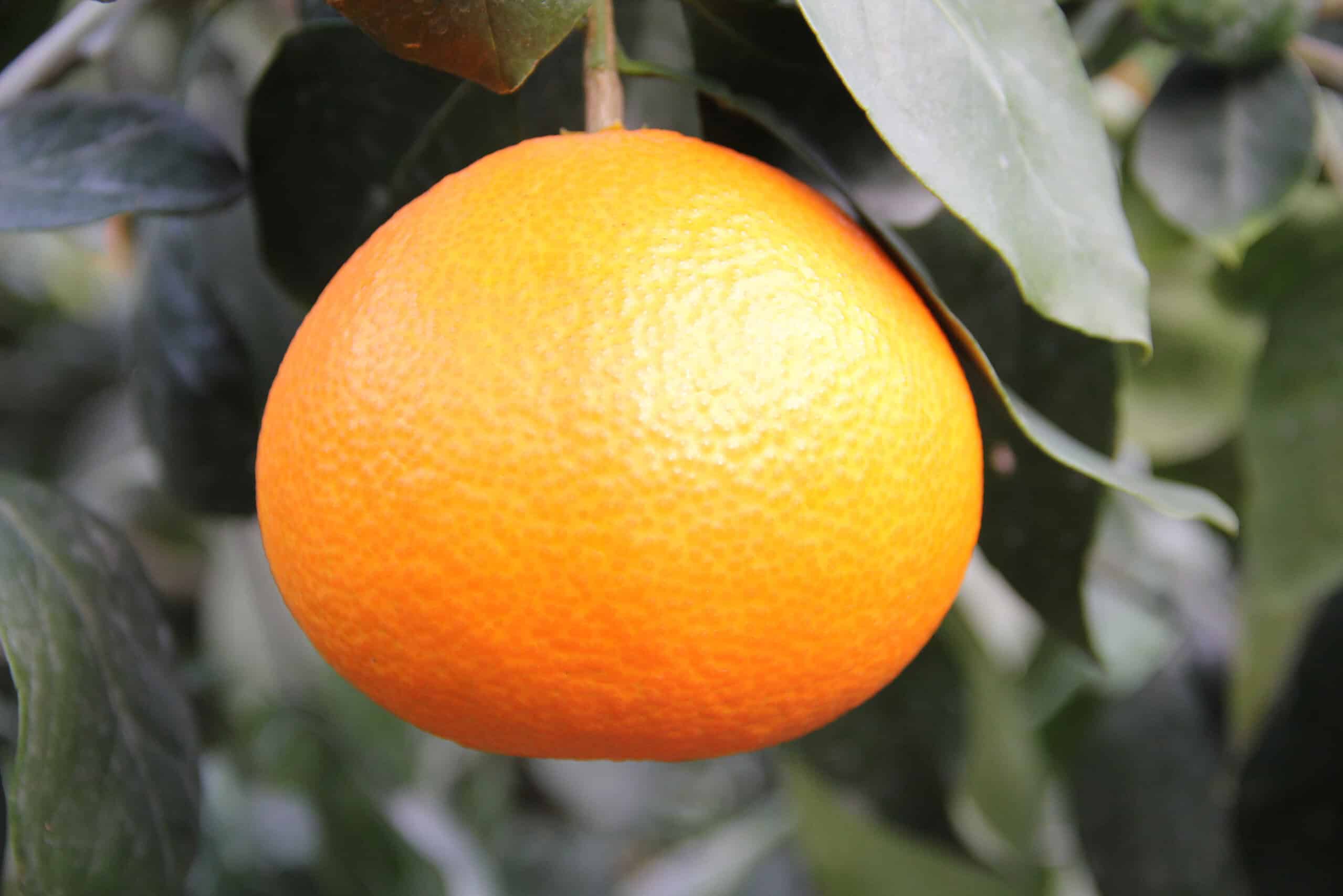
What Makes Beni Madonna Different from Other Citrus Fruits?
Owning to its sweet taste, low acidity, and lots of juice, the Beni Madonna offers a delightful citrus experience and is often used for a special gift.
How Do You Best Enjoy Ehime Jelly Oranges?
Ehime Jelly Oranges have a thin skin and can be quite delicate to peel. It is better to slice them instead of peeling them. Their slices bring a fresh and sweet citrus flavour to desserts and salads. However we would recommend enjoying them as they are.
How long can you keep Beni Madonna?
You can keep whole and unopened Beni Madonna also known as Ehime Jelly Oranges for 5 to 7 days. We’d recommend storing them in a bag to prevent the inside of the fruit from losing moisture.
What is the meaning behind Madonna in the Beni Madonna name?
It is believed by some that the Madonna part of the name is inspired by the nickname of one of the beautiful female characters in Botchan, a famous Japanese novel by Natsume Soseki set in Matsuyama City in Ehime Prefecture.

